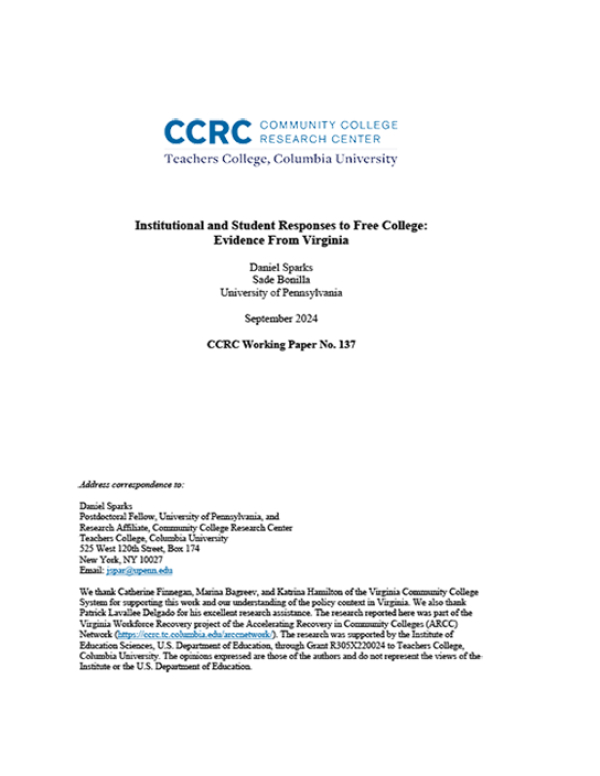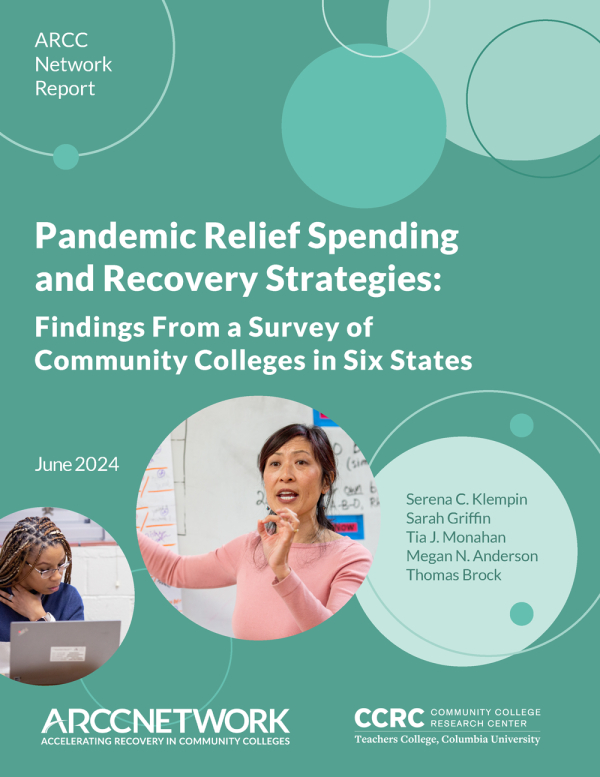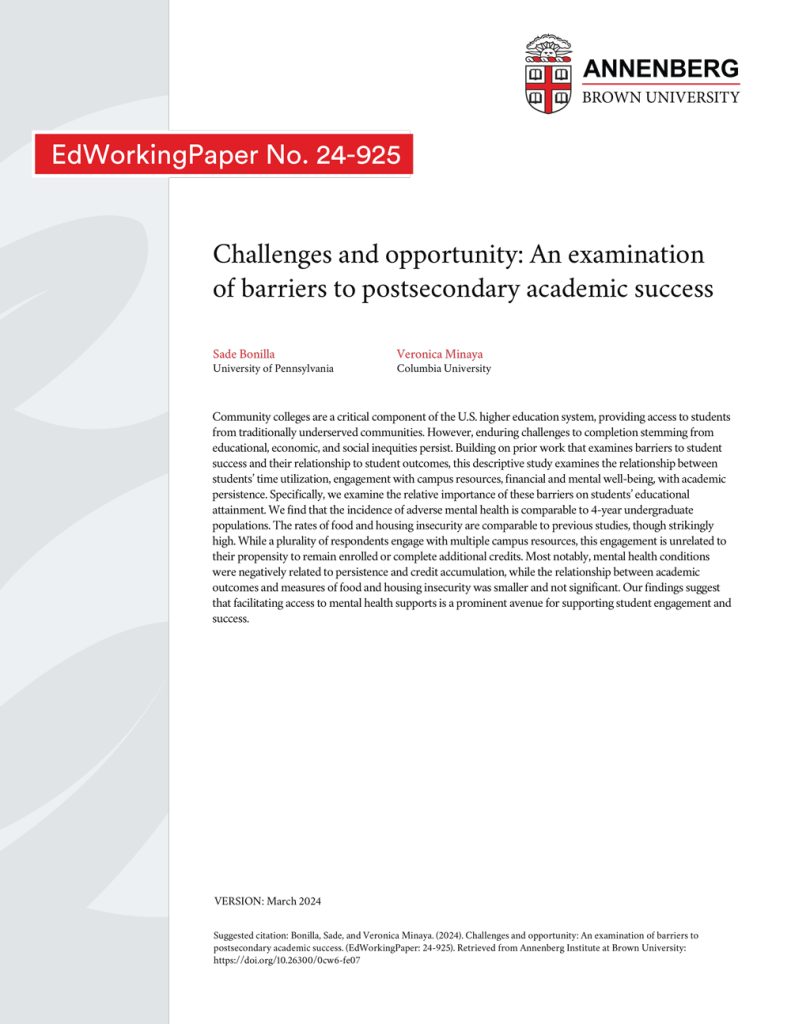The Postsecondary Outcomes of High School Dual Enrollment Students: A National and State-by-State Analysis

Using NSC data, this report presents national and state-by-state findings on the postsecondary enrollment and completion outcomes of high school students who began taking dual enrollment college courses in fall 2015, tracked for four years after high school.
Institutional and Student Responses to Free College: Evidence From Virginia

Using administrative data, this paper analyzes Get a Skill, Get a Job, Get Ahead (G3)—a free community college initiative that Virginia implemented in 2021—and shows that both institutions and students responded to the tuition-free messaging and eligibility criteria.
Pandemic Relief Spending and Recovery Strategies: Findings From a Survey of Community Colleges in Six States

This book chapter explores the personal support networks and help-seeking preferences of immigrant-origin, first-generation-in-college students (FGCS) as part of a three-year longitudinal mixed-methods study with FGCSs at four public Hispanic-serving institutions in California.
Supporting Learning Online: Perspectives of Faculty and Staff at Broad-Access Institutions During COVID-19

This Postsecondary Teaching with Technology Collaborative report examines how faculty and staff at nine institutions reconsidered students’ online learning needs in the midst of the pandemic, and it explores how supports were offered to help students strengthen their self-directed learning skills.
Challenges and Opportunity: An Examination of Barriers to Postsecondary Academic Success

This Annenberg Institute working paper examines the relationship between community college students’ academic persistence and their time utilization, engagement with campus resources, and financial and mental well-being, as well as the relative importance of these factors for students’ educational attainment.
